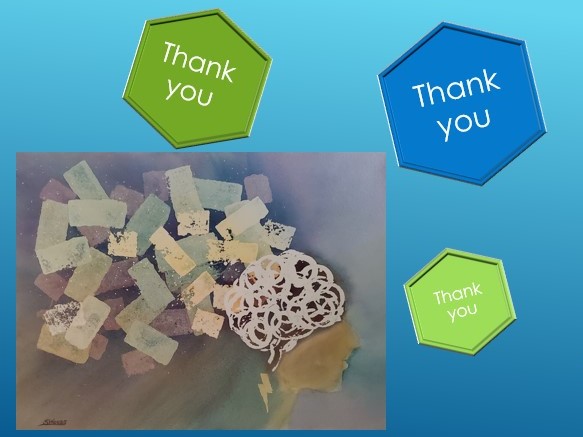For International Women’s Day this year I’ll be doing something a bit different – particularly for an emerging artist and chronic pain patient, I think. This afternoon I’ll be teaching a full 2-hour university class on the Limbic System, for a course called “Brain & Behaviour”. I’ll be doing this as a Patient Partner, from home, as a volunteer.
This speaking invitation was from a professor and researcher who’s also a woman, and a firm believer in STEM education (Science, Technology, Engineering, and Math) for girls and women. My focus will be on teaching these future healthcare professionals about chronic pain, which predominantly affects women. And veterans, a point that I’ll highlight as a former Air Force reserve officer myself.
A few weeks ago I taught another class for this professor, for her course on “Perception & the Brain”. It went so well that she and her students convinced me to come back, to teach a class for her second course. That first 2-hour talk was for final-year students, and I presented on “Perception & Chronic Pain”; not only the patients’ perceptions, but also how pain conditions are viewed by healthcare professionals. My goal was to teach these health-sciences students not to dismiss, disregard, or disrespect their future chronic pain patients, because that’s something that still happens today.
My talk this afternoon will be on the body’s Limbic System, and how it’s involved in our experiences of pain and chronic pain. I’ll also touch on its’ role in anxiety, depression, PTSD (post-traumatic stress disorder), stress, serious trauma, vicarious trauma, and more. What exactly does the limbic system do?
Processing of emotions, positive or negative, has long been attributed to the brain’s limbic system,
which is nestled in the inner part of our brain and consists of at least a dozen smaller structures…
the limbic system also enables us to sense and react to our environment through pain.
Like physical pain, emotions have evolutionary importance.
For instance, fear helps us avoid danger…
emotions are powerful motivators of our actions and reinforce behaviors that help” ensure our survival. (1)
Perhaps the most important of these brain structures, for my presentation at least, are the amygdala, hippocampus, and hypothalamus, along with the prefrontal cortex which helps us process or control some of our emotions and reactions. There are tools and techniques that can help us influence our limbic systems to a certain extent, such as art practice and creativity, breathing exercises, mindful meditation, physical activity, visualization, etc.
So hopefully my Women’s Day activity will have a positive impact at some future point, for other women living with persistent pain – or even with my own disease; Complex Regional Pain Syndrome or CRPS, formerly called Reflex Sympathetic Dystrophy or RSD.
My motto is “Art Despite Pain”, because my art practice is heavily intertwined with my chronic pain awareness and outreach activities. This is a good example, as I’ll be discussing the benefits of artistic and creative practices on the limbic system – on the brain – for managing chronic pain and other conditions. On that note, I’ll wish you a happy and inspiring International Womens’ Day. And, as I’ll say to the students for attending the class, and to the professor for inviting me as a guest speaker: “Thank You”, for taking the time to stop by the website today. Keep well, and stay safe.

References
(1) Emily Orwell; When Everything Hurts. Science in the News Boston (SITN); Harvard Graduate School, 02 Nov 2018. Online:
https://sitn.hms.harvard.edu/flash/2018/everything-hurts-story-grad-student-trying-rise-chronic-pain-depression/

